
Hope for a huge, ancient and imperilled fish
First Nations are leading efforts to make sure lake sturgeon can find a home in...
It’s a wet and windy morning in Winnipeg and Garrett LeBlanc’s main concern is dodging the foul-smelling juice spraying out from the dozens of green bins he’ll tip during the day.
He zips his raincoat up high and secures a 290-litre bin to the hydraulic arm on the side of his ride for the day — a compact garbage-collection truck — then pushes a button to start the lift. He keeps his eyes trained on the slow rise of the bin, then on the green bags of discarded watermelon rinds, meat scraps and kitchen leftovers that tumble into the bed of the truck. The breeze hooks a thin trail of “rot splatter” and sends it whizzing toward LeBlanc. He dodges. He gives the bin a shake at the peak of the lift, a quick up-down motion with the buttons, before lowering it back to the pavement.
LeBlanc then lines the bin with a new, compostable bag before wheeling the green tub back into place among this particular condominium’s other garbage and recycling bins.
It’s a process he’ll repeat dozens of times over the course of the day on his collection route for the social enterprise Compost Winnipeg.
“There’s parts of the job that aren’t glamorous and not for everyone,” he says, back in the cab of the truck. “But composting, I’ve always done that at home, and being able to tangibly pick up and see everything that’s being diverted from the dump feels pretty meaningful.”
Compost Winnipeg came into being in 2016, when the Green Action Centre — a Manitoba non-profit focused on environmental education and green-living programs — was looking for a way to generate a little extra revenue. The City of Winnipeg had just shot down a compost-collection service of its own, and the Green Action Centre saw an opportunity to bring in some new funds while filling a gap in city services.
Over the last six years the social enterprise has led the way in Winnipeg’s uphill battle with organic waste diversion: the team has collected more than three million kilograms of organic waste from commercial and residential clients, and transformed that waste into nutrient-rich soil food called humus, used to prolong the life and health of the Prairie Green Landfill just outside Winnipeg’s city limits. Though that might seem like a lot, Winnipeggers sent more than one billion kilos of waste to the city’s Brady Road landfill over the same time period — and between 40 and 60 per cent of that is organic waste.
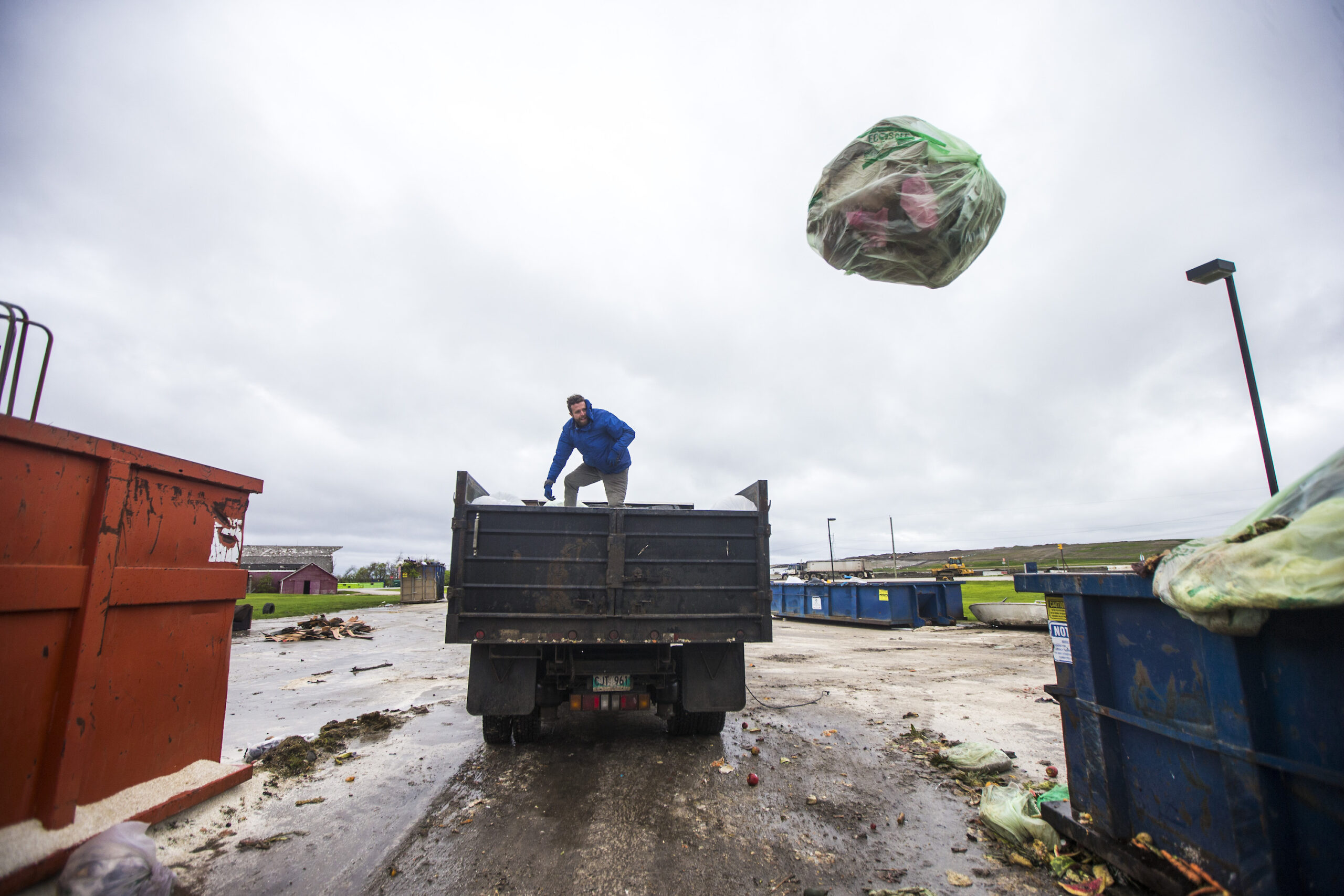
Susan Antler, executive director of the Toronto-based Compost Council of Canada, says it’s time to redefine how people think about their food and yard scraps.
“It’s not waste — and that’s a big paradigm shift,” she says. “It is a valuable resource that has to be put to good use. Burying it in a landfill is just irresponsible now.”
Here’s why: to decompose quickly, organic matter needs a fair bit of oxygen. When it’s tied up in garbage bags and packed down in the dump, that oxygen is limited and the decomposition process can get interrupted. All that slowly rotting food releases methane — a greenhouse gas with 80 times the warming potential of carbon dioxide during its first 20 years in the atmosphere. The Brady Road landfill is the second largest emitter of greenhouse gases in Manitoba.
By contrast, composting — be it in a backyard bin or in long, industrial-scale piles called windrows — helps move the natural decomposition process along quickly, creating a nutrient-rich supplement critical to soil health while eliminating methane emissions.
About 25 per cent of earth’s biodiversity lives in the soil, Antler adds. Instead of thinking about compost as a choice between a garbage bin or a green bin, she encourages people to think about the green bin as a way to transform “waste” into essential food for the ecosystems underfoot.
At the Prairie Green Landfill, where Compost Winnipeg offloads organics at the end of the day, the humus is formed in windrows and used for landfill remediation. Each layer of garbage is covered by a layer of soil and humus, which can trap some of the carbon emissions from the trash and help keep the site as clean as possible.
Spotting a green bin or a compost collection truck can come as a surprise in Winnipeg, the largest city in Canada without a municipal collection program.
Coun. Brian Mayes, chair of the city’s waste and water standing committee, remembers the civic administration first looking into organics collection in 2011. Back then, Winnipeg was pushing to divert 50 per cent or more of its solid waste from the landfill by 2020, and council proposed an organic-waste pilot program that would start in 2014 and be ready for full-scale expansion by 2017.
The program never took off. Mayor Brian Bowman, who was elected in fall 2014, couldn’t risk compromising his campaign promise of a 2.3 per cent property-tax hike by running a costly new service, and residents who were already composting in their backyards began writing to their councillors to oppose an increase in their tax bills. Compost was dead in the water.
“I had a woman at a seniors home say, ‘I started composting during the war,’ basically, ‘I’m a good guy, I’ve been doing this my whole life, why would you charge people like me,’” recalls Mayes (St. Vital).
“‘To make this system work,’ is the awkward answer. I think it is a program that has benefits for everybody; it’ll help with our diversion rate, and I think it’s worth doing.”
Winnipeg’s waste diversion rate has hovered at about 33 per cent for almost a decade.
But with organics making up between 40 and 60 per cent of landfill waste, the city is starting to take a second look at compost collection.
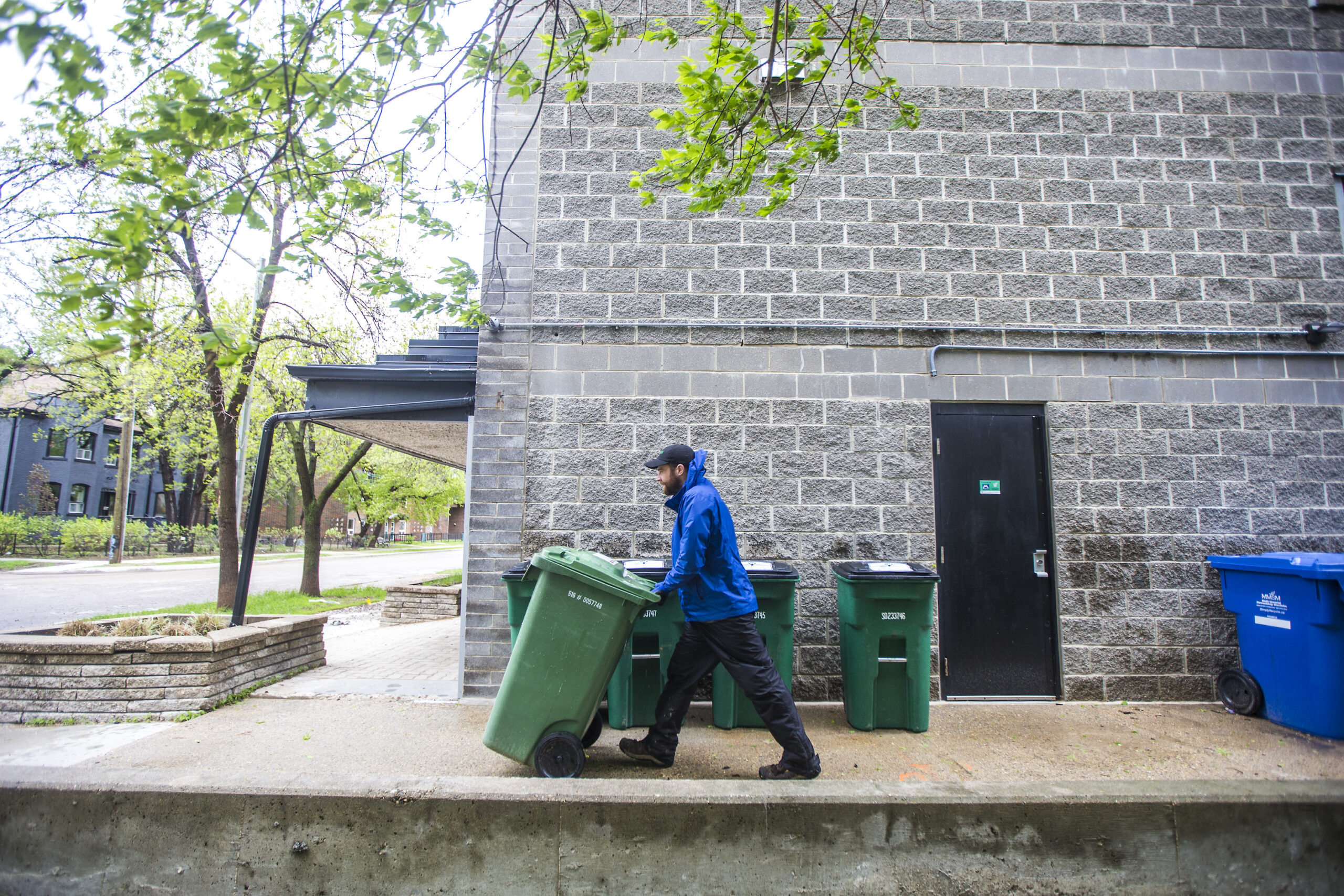
In 2020, Mayes helped Winnipeg launch a two-year pilot program to test the feasibility of a citywide collection program. Approximately 4,000 residents from five neighbourhoods were outfitted with a green collection bin, a kitchen compost tub and a supply of compostable bags — free of charge — that October. The food waste collected from those homes is processed with regular seasonal yard waste (collected on a bi-weekly basis from all Winnipeg residences between April and November, totalling about 30 million kilos a year) at Brady Road.
So far, the pilot has been a sweeping success. After a month of weekly collection, the city surveyed participants and found 99 per cent of respondents were keen to see the program expanded across the city.
“I think it’s time now, people are more interested,” says Mayes. “In 2011, almost no one raised this at the door; now people say we’re way behind on this issue.”
LeBlanc is one of a half-dozen Compost Winnipeg couriers. Every morning, from Monday to Thursday, he packs a bag with weather-appropriate clothes and enough food to last a long day on the road. This particular morning he’s in charge of the early shift. He biked to work before dawn, inspected the truck and hit the road before 6 a.m. to empty a bevy of bins filled up by the city’s hospitals. The morning route is primarily commercial clients — the hospitals, Canada Goose, Starbucks and IKEA, among others — but his afternoons vary with stops at condos, apartment blocks, businesses and residential properties.
Over the course of the day he’ll either tackle a couple dozen of the full-size bins, sometimes weighing up to 115 kilos (250 lbs), or nearly 100 of the smaller, 23-litre residential bins, manually hoisting each seven-kilo (15 lbs) bucket over the back of a pickup truck.
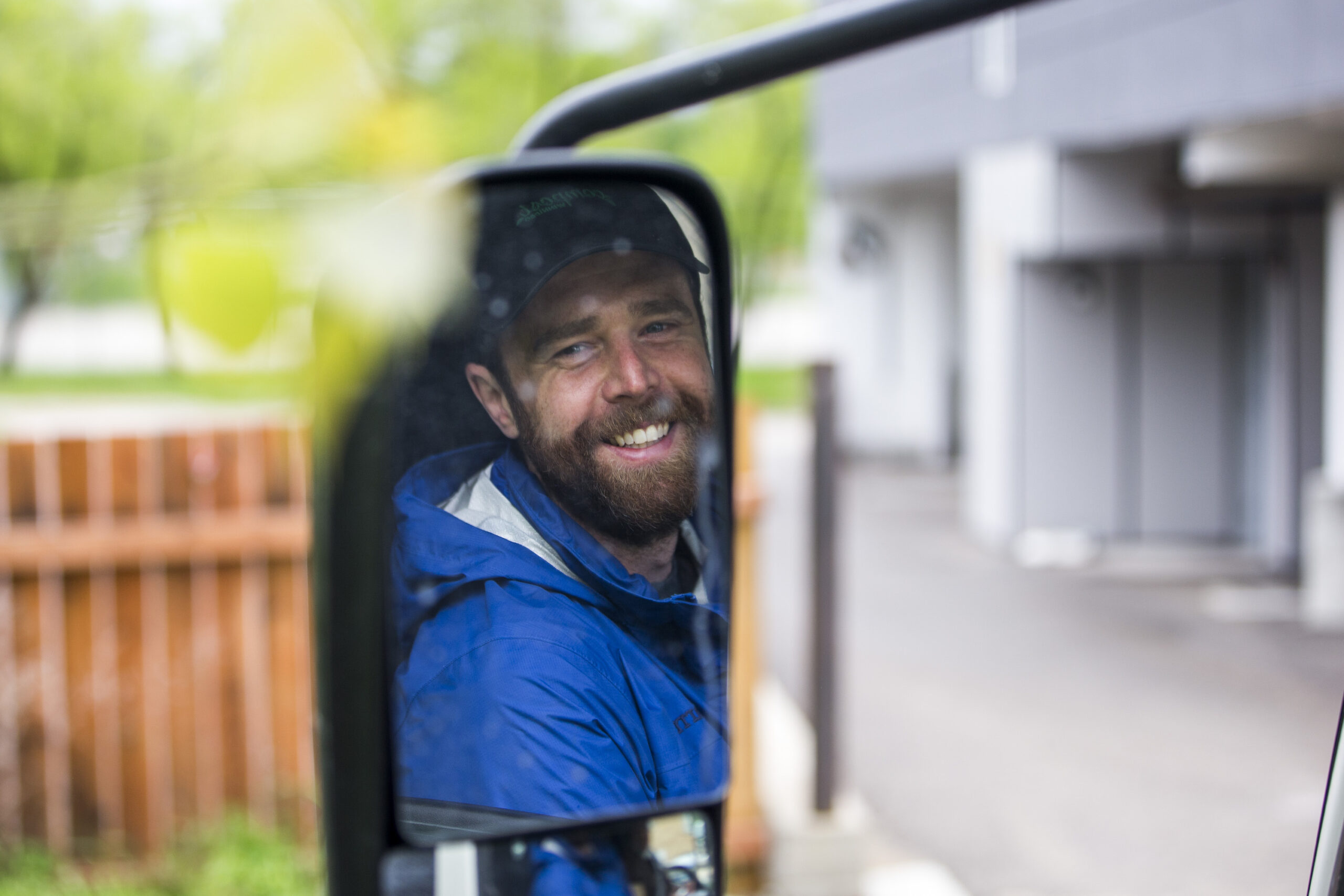
Along the route, he stops to chat with curious residents, or smile and wave at familiar faces. At one stop, a woman collecting mail asks LeBlanc if he has a business card to share. He directs her to the organization’s website. These opportunities for word-of-mouth advertising and education happen pretty often, he says. Kids think of him as a bit of “a superhero,” he says, and retirees often stop him to ask questions about the unfamiliar green bins.
“I try to educate by just talking to people as much as possible,” he says. “People are quite approachable and thankful, and for people who don’t know that we are a service, they’re usually really shocked that it’s happening and they want to get involved somehow.”
At the compost council, Susan Antler says, Winnipeg still “has a ways to go” with its organics collection. Three-quarters of Canada’s census metropolitan areas already have municipal food waste collection up and running, and those regions tend to report much higher rates of composting and waste diversion, Statistics Canada data shows. In Edmonton, for example, waste diversion jumped 12 percentage points after curbside compost collection was launched last year. In Vancouver, a citywide ban on putting organics in the garbage has contributed to a waste-diversion rate of more than 60 per cent.
But Antler notes Winnipeg is not unique in its slow approach to compost. When a landfill is readily accessible, as is the case in Winnipeg, it’s hard to break that momentum, she says. Even cities with rigorous residential compost collection still lack a system to collect organics from businesses — even though roughly two-thirds of a city’s waste is generated by the commercial sector.
The solution, she says, is incentivizing organic waste diversion, either by charging residents and businesses more for collecting it or by putting in place regulations that prevent it from getting to the landfill. But for now, some municipalities find the cost of maintaining an existing landfill less daunting than the startup cost of new infrastructure for organics recycling.
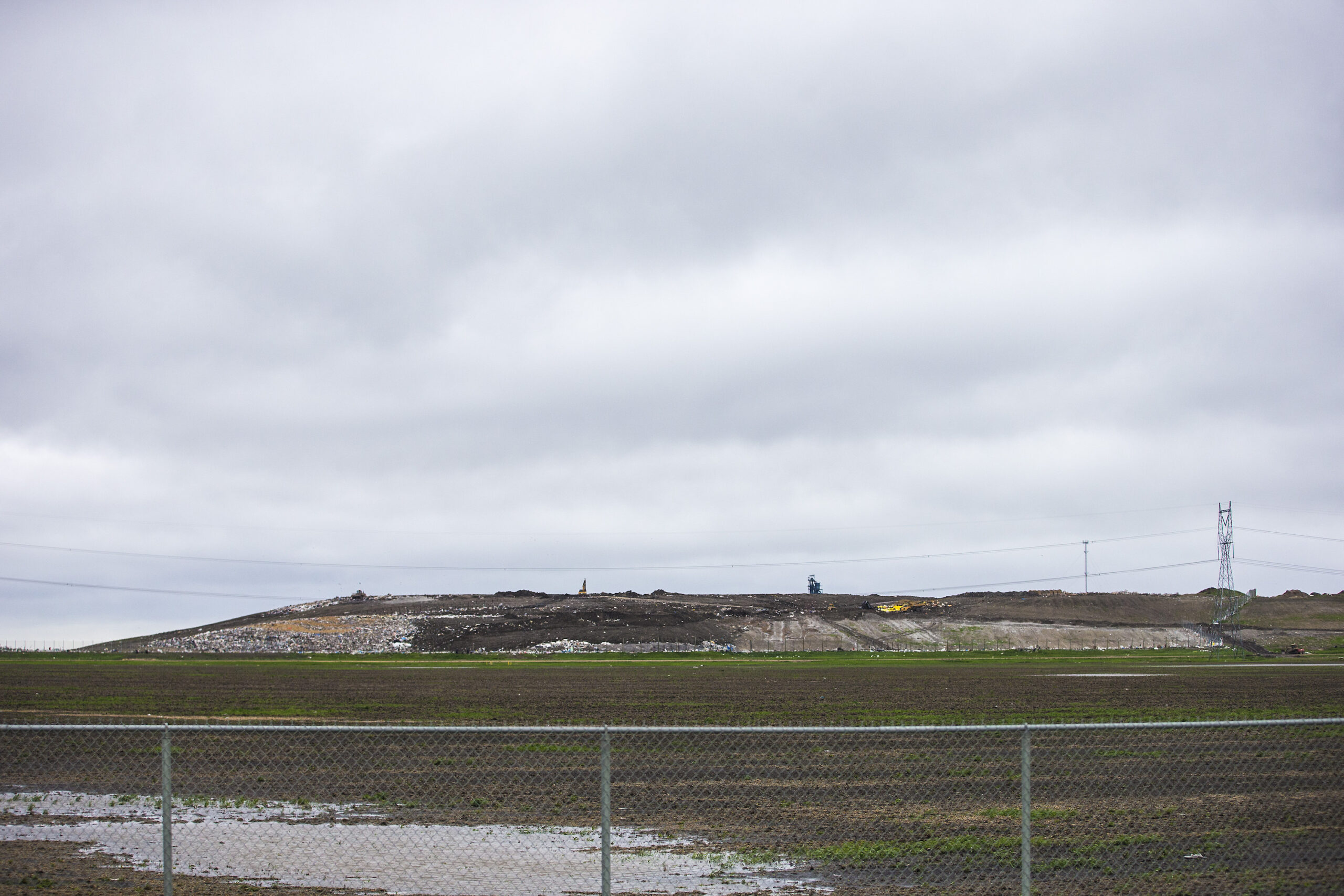
When Winnipeg’s pilot program wraps up in the fall, city staff will prepare a report, and council will vote on whether to expand the program. If it’s approved, councillors will have to debate how often to collect compost (they could choose to reduce garbage collection to every two weeks and collect compost on the alternate week), whether they will collect food waste year round or on a seasonal basis and whether an indoor or outdoor processing facility will better serve the city’s needs. All those factors will help determine how much the compost system will cost the average resident — and how quickly a program could be launched. Even with the most aggressive timeline, Mayes expects green bins won’t be at everyone’s doors until 2025 or 2026.
Every Tuesday, Laura Gow takes a 23-litre compost pail out from under her sink, and drops it off by a shed outside her Grant Avenue apartment building. By the end of the day, Compost Winnipeg will have emptied her pail and replaced the green compostable bag for the week. Gow is one of Compost Winnipeg’s longest-standing clients; she signed up for collection in 2017 after moving out of her childhood home.
“We had a backyard composter at my parents’ house, but you don’t have that in an apartment, and I really hate throwing away stuff like vegetable waste,” she says.
“First of all, it takes up a lot of room in the garbage. Second of all, you just feel guilty.”
Gow isn’t a gardener and she doesn’t remember ever using the finished compost at her parent’s house, but she says she was struck by the extra waste in her trash after she moved into the city. Nowadays, she composts simply because it puts that waste to better use than the landfills.
“When you think about the fact that every toothbrush you’ve ever used still exists — it’s gross,” she says. “Food waste wouldn’t last that long, but still, maybe it can be useful as compost.”
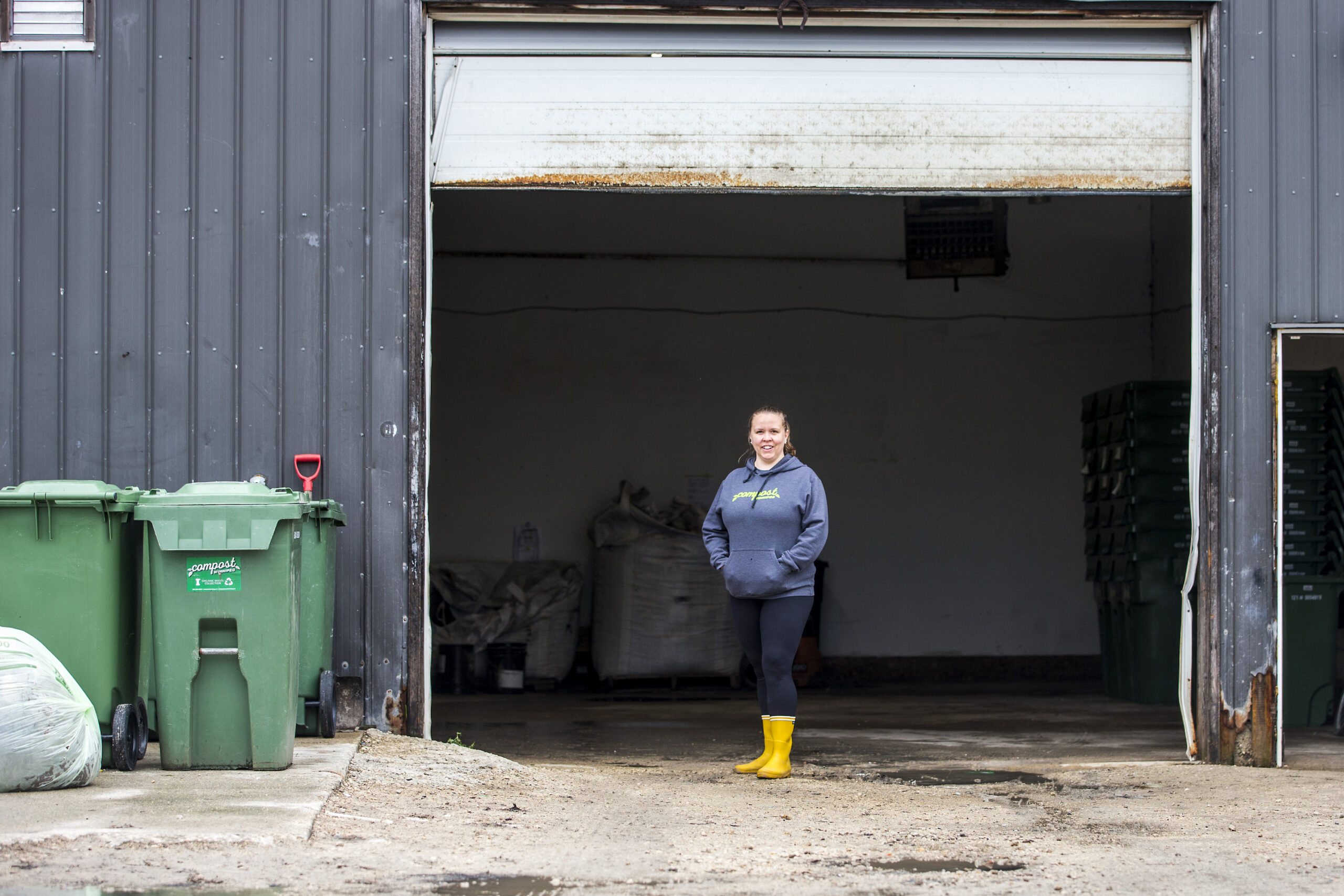
Back at Compost Winnipeg headquarters, sales and customer-service lead Karrie Blackburn says she’s now used to dispelling the common myths about composting.
“I think a lot of the misconceptions are very fear-based, almost like a knee-jerk reaction,” she explains.
For residents concerned about paying extra taxes for compost collection, Blackburn notes that new landfills will eventually cost tax dollars, too (though the Brady Road landfill still has about 100 years of life left in it, Mayes says.) Existing landfills that have already been covered (Winnipeg’s Westview Park — Garbage Hill, as it is more commonly called — comes to mind) also need ongoing, and costly, remediation.
“It doesn’t cease to exist just because you bury it,” she says.
For residents worried the green bins might smell, Blackburn says those stinky materials are already in the garbage, and compost bins can be emptied just as frequently as the trash is. The same goes for pests: if you don’t have bugs in your garbage as it is, they’re not likely to show up in the compost pail, either. In the summertime, when things get a little smellier and fruit flies get a little more common, compostable bags can be kept in the freezer, where they’re less likely to cause any ick.
Compost Winnipeg has received some grant funding from the city as it works to provide an interim option for Winnipeggers looking to recycle organics. It currently operates a seven-truck fleet and makes about 300 commercial and more than 850 residential stops each week, collecting between 80,000 and 90,000 kilos of organic waste every month.
Residential clients pay $35 a month and are provided with free compost bags and a black, 23-litre pail. Commercial clients pay about $134 monthly for a 290-litre bin. Some of that revenue covers the program’s operational costs, and the rest is funnelled into programming at the Green Action Centre. Compost Winnipeg is always accepting new clients.
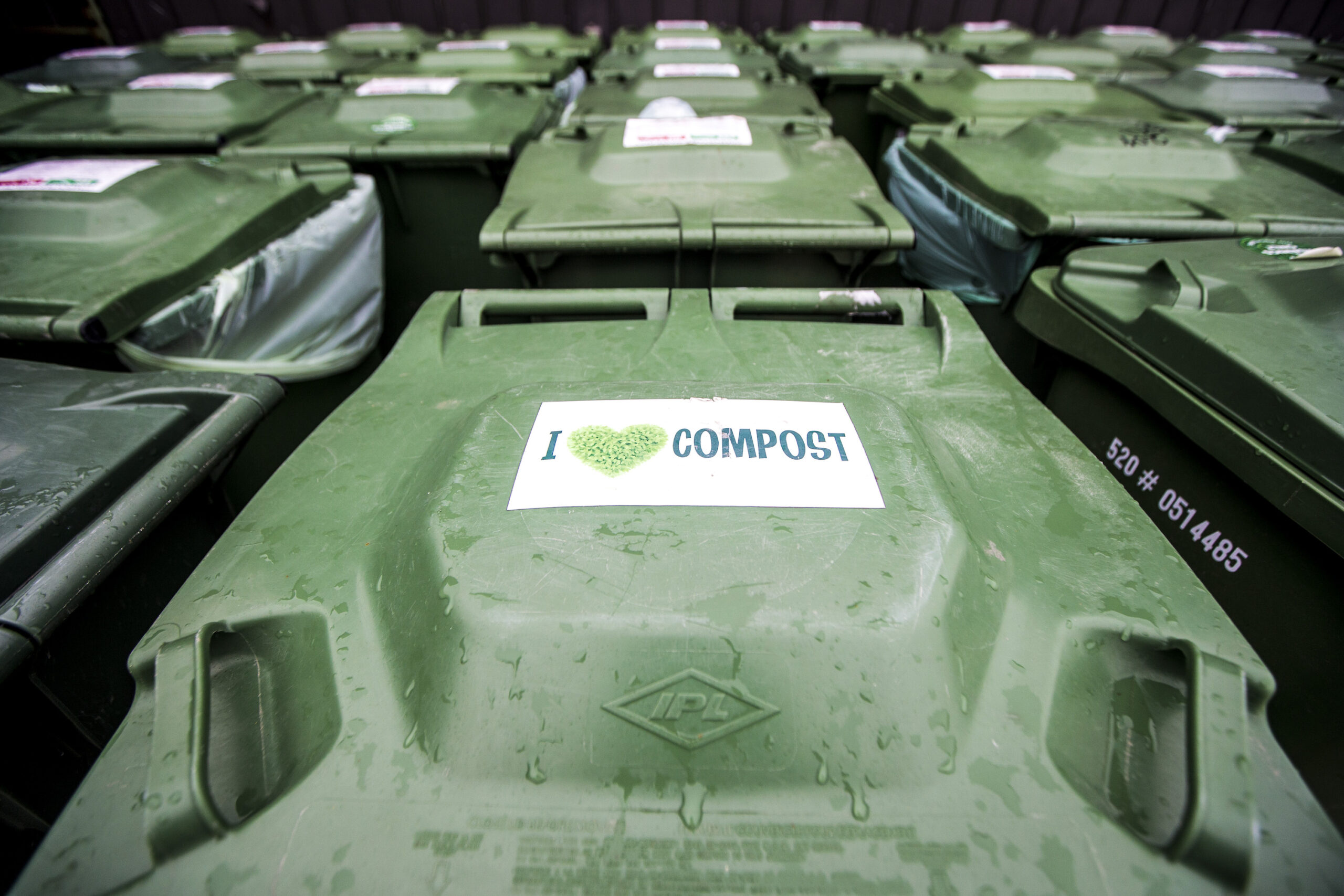
The group’s main focus is running a smooth collection service, but Blackburn is also in charge of securing contracts for special events, such as Winnipeg Pride, and running site tours and orientation for commercial clients just starting to compost. Now, as the push for citywide compost collection starts to gain momentum in Winnipeg, Blackburn is hoping to amp up the educational component of her job by organizing letter-writing campaigns and other actions to help reinforce the desire for the service.
“Just because you have the privilege of a backyard to compost doesn’t mean your neighbour should be deprived of a service that could help the whole problem,” she says, adding she’s focused on helping Winnipeggers who want to see collection across the city get a voice at city hall.
Thanks to the group’s strong relationship with the city, Blackburn expects Compost Winnipeg will have a role to play in collection regardless of when the city starts a program of its own. So far, she says, the city has not indicated plans to pick up from businesses, so Compost Winnipeg will focus its efforts there.
As a driver and compost collector, LeBlanc hopes the logistics of his job will get a little easier as the city gets used to green bins. Instead of collecting pails from doorsteps, or wheeling heavy bins sometimes entire blocks to tip them into the truck, he envisions a curbside collection system much like what already exists for garbage and recycling.
In the meantime, though, he’s happy to make the extra effort for clients, and keep educating Winnipeggers along the way. As a longtime composter, his biggest piece of advice for anyone looking to start composting at home is to be willing to make the extra effort themselves. Buying a backyard compost bin, taking scraps to a local community garden, joining a collection service or even just joining forces with someone else who composts can all help divert organic waste
“That extra step doesn’t even have to be a whole lot of work,” he says.
Get the inside scoop on The Narwhal’s environment and climate reporting by signing up for our free newsletter. A $335 million funding commitment to fund...
Continue reading
First Nations are leading efforts to make sure lake sturgeon can find a home in...

We’re excited to share that an investigation by The Narwhal is a finalist for the...

A new documentary, Nechako: It Will Be a Big River Again, dives into how two...
